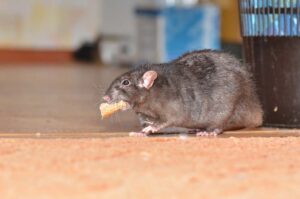The Complete Guide to Rodent Pest Control for the Homeowner
If you’ve ever seen a rat or a mouse skittering across the floor of your kitchen, you’re not alone. Nearly 14.8 million individuals reported seeing rodents in their houses, according to the 2019 American housing survey (AHS). Rats and mice, in particular, are related to a variety of health problems. Indeed, rats and mice are especially harmful since they have been linked to the spread of over 35 illnesses. You’ll be shocked at how many numbers may take up residence in your house at any one moment. Although prevention is critical, these cunning pests will find their way into your yard regardless of your best attempts to keep them out. You’ll discover everything you need here to assist you in identifying the most common varieties of rodents, spotting them, and why you need rodent pest control.

How to detect rodents
Rodents are the world’s biggest mammal group, with around 2000 distinct species. Even though each species has different feeding preferences, appearance, and environment, all rodents, regardless of species, have constantly developing front incisors. They are continually gnawing on items to keep their teeth from overgrowing.
What are the most prevalent rodent species?
Although over 2000 rodent species worldwide, only around a dozen of them make their way into American households, the two most prevalent species that you are likely to encounter in your house are rats and mice. These two are often drawn inside by pet or human food. They both have distinct physical characteristics, with an adult mouse being much smaller than an adult rat. While rats have blunt noses, mice have pointy ones and more prominent ears than rats.
Where do rats make their homes?
Rodents are especially well-known for nesting in warm tunnels they create by burrowing underground or nibbling with their teeth, whether within your home or in your yard. Rats and mice, in particular, will fit through any gap and establish nests within, most often in ceilings and lofts. These pests also make their nests in declutched boxes and disused drawers, particularly in kitchen environments.
What are the telltale indicators that you have a rodent infestation?
Gnaw marks and droppings are two of the most evident signs of a mouse or rat infestation in your home. Although you can also notice footprints, grease skid marks, and even concealed food hideouts, you won’t know you have a rat infestation until you smell their urine, which has a pungent ammonia-like stench. Additionally, the noise they generate, particularly at night, can warn you of the presence of such creepy guests in your house.
How to eliminate rodents
Preventative measures are critical when dealing with rodents. Regularly inspect your home for any holes that may need to be sealed; it’s also crucial to avoid storing debris or even wood piles near your home and keep your groceries properly.
Suppose you discover that your house is already infected with rodents. In that case, you may attempt DIY preventative tactics such as traps, but contacting a pest control service provider is much more effective and safe.
Please call us right away to learn more about what Home Run Pest & Termite Control can do for you to ensure your home is rodent-free and help you maintain it.
